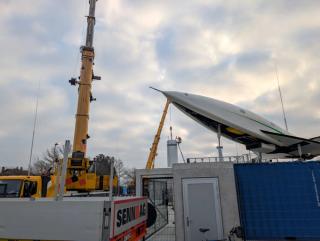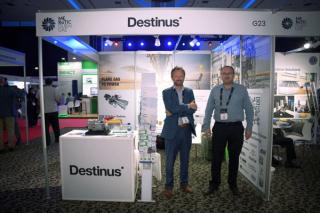Destinus’ hyperplanes are special. Not only because they will fly at velocities above the speed of sound and emit zero CO2 emissions, but also because they will operate autonomously. You read that right — there is no need for a pilot or cockpit in the hyperplanes! Instead, a safety pilot will monitor the flight from the ground and take control if needed.
The reason is the following: at such a high speed, controlling and stabilizing an aircraft becomes a very complex task for a human alone. Moreover, as of today, almost all airplanes are provided with an automatic control system (i.e. an autopilot) that either helps or replaces the pilots’ tasks during several phases of the flight.
Autopilots
Autopilots are flight control systems or Guidance, Navigation, and Control (GNC) systems, that control the path of the vehicle and stabilize it. In reality, they perform many more tasks. These systems are composed of at least three main parts: Guidance, Navigation, and Control.
Guidance
Guidance deals with the task of computing the direction of the vehicle given its mission objective and the current navigation state. Guidance commands are computed and sent to the aircraft’s control logic.
Navigation
Navigation’s objective is to know where the vehicle is in a given reference frame as well as its speed, acceleration, and attitude. This information is taken from different sensors, e.g. inertial measurement unit, GPS receiver, or air data sensor, and is combined in a set of data which is then used by guidance and control.
Control
Control deals with assuring the vehicle’s stability and computed direction during the flight. This is achieved by translating the guidance commands into the commands and signals to the servomechanisms. They in turn move the control surfaces of the aircraft (e.g. ailerons, elevators, or rudder), which produce the forces and moments to steer the vehicle.
As it can be seen, these three blocks act as the brain of the aircraft by sensing the environment around it and moving the controllable parts in the desired direction, following the desired trajectory. At Destinus, the development of the GNC system also called Flight Control Software (FCS), is carried on concurrently with the autopilot flight tests. In fact, every time a new mode of operation of the aircraft is developed, a new navigation sensor is integrated or a new control algorithm is added, the Flight Control Software is tested as well.
Tests are first performed in simulation through a six degrees of freedom (6 DoF) simulator, which simulates the translational and rotational motion of the aircraft. Its purpose is to assess the flight dynamic, kinematics, and qualities of the aircraft with the Flight Control Software in the loop. This mode of simulation is also called Software-in-the-loop (SWIL or SIL). In fact, the Flight Control Software is the same that would run on the aircraft during a flight. Once the new feature or implementation is consolidated in simulation, the Flight Control Software is compiled and embedded on the Flight Control Computer (FCC). The FCC is a computer that runs the Flight Control Software, receives the data from the navigation sensors and the engine and sends the physical signals to the servomechanisms and to the engine as the required throttle level. Then, the Flight Control Software (FCS) is tested in flight on an aircraft, used as a testbed.
During the flight tests, a safety pilot is always present to ensure safety measurements and to take manual control of the aircraft in case the vehicle does not behave as planned. This incremental development is followed until the FCS covers all the operation modes of the aircraft during its mission. However, it does not end here. The objective is to use the same autopilot on different prototypes with different characteristics, mass, aerodynamics, propulsion systems, etc. This dictates a tuning phase of algorithms (for instance, adapting specific control parameters to different speeds, altitudes, and aircraft’s varying mass during the flight) as well as the development, implementation, and testing of other features to adapt the logic of the FCS to new environmental conditions, aircraft properties and speeds.
We are looking for the brightest and most ambitious engineers to shape the future of autonomous hypersonic transportation. Keep an eye out on our careers page for exciting opportunities with us!
(The image was generated by AI)






